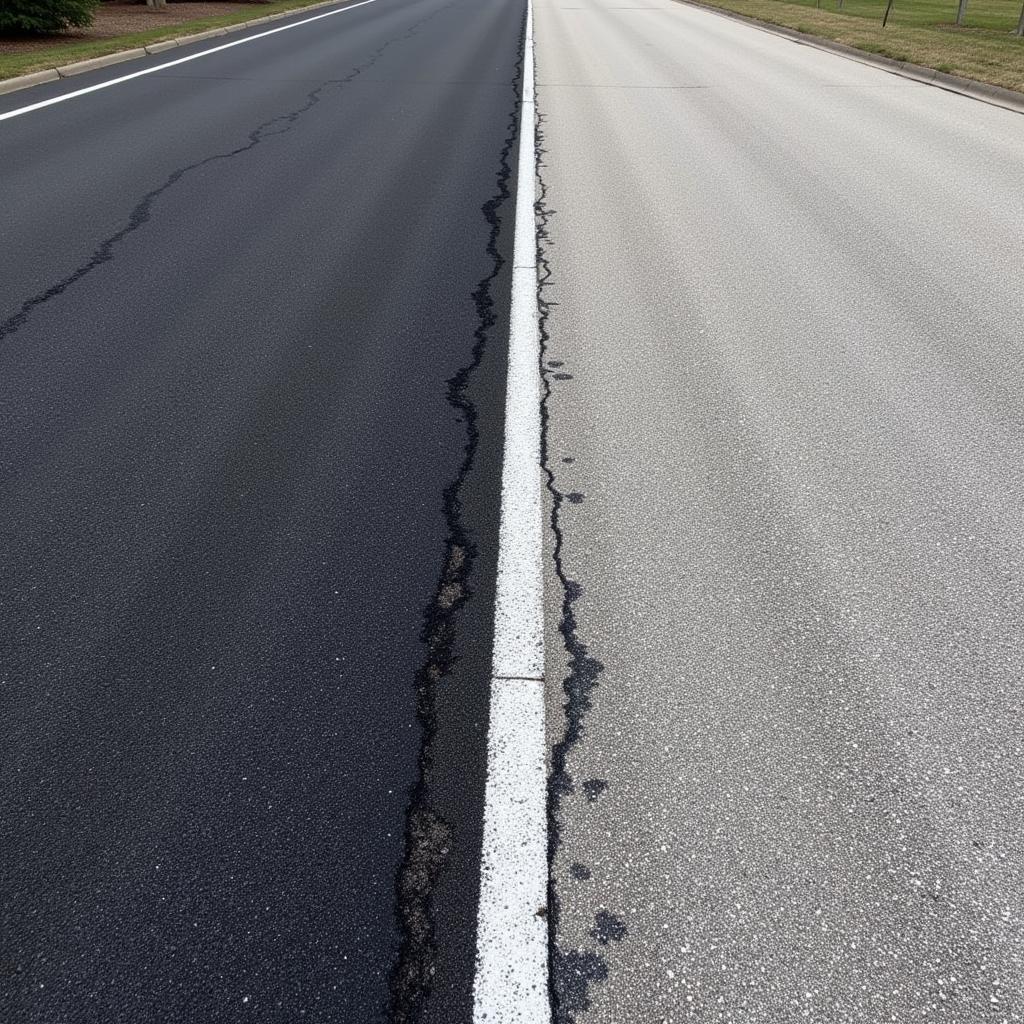Tarmac, the ubiquitous material paving our roads and driveways, often appears as a simple, dark surface. But what color is tarmac, really? The answer, surprisingly, is more nuanced than you might think. While commonly perceived as black, tarmac can range in shades from dark gray and charcoal to even brownish hues depending on its composition and age. Let’s dive into the fascinating world of tarmac colors and explore the factors that influence its appearance.
Decoding the Shades of Tarmac: More Than Just Black
Tarmac, short for tarmacadam, is a composite material made of aggregate (crushed stone, gravel, or slag) bound together with a bituminous binder, typically derived from crude oil. This binder, often referred to as bitumen or asphalt, is what gives tarmac its characteristic dark color. However, the specific shade can vary depending on the type and source of the bitumen used. Some bitumens are naturally darker, resulting in a near-black tarmac, while others can have a slightly lighter, more grayish appearance. Over time, exposure to sunlight and weathering can also cause the tarmac to lighten, leading to variations in color across different sections of a paved surface.
The aggregate used in the tarmac mix also plays a role in determining the overall color. Different types of stone and gravel come in various shades, from light gray and beige to darker browns and reds. While the bitumen typically dominates the color, the aggregate can subtly influence the final appearance, creating slight variations in hue. For instance, tarmac made with lighter-colored aggregate might appear slightly less dark than one made with darker aggregate.
Factors Affecting Tarmac Color: A Deeper Dive
Several factors can contribute to the variations in tarmac color. These include:
- Type of Bitumen: Different types of bitumen have different color properties. Oxidized bitumen, for example, tends to be lighter in color than standard bitumen.
- Aggregate Composition: As mentioned earlier, the color of the aggregate can subtly influence the final shade of the tarmac.
- Age and Weathering: Exposure to sunlight and the elements can cause the tarmac to fade and lighten over time.
- Additives: Certain additives used during the manufacturing process can affect the color. For example, pigments can be added to create colored tarmac for specific applications like cycle paths or playgrounds.
Understanding these factors can help explain why you might see different shades of tarmac in different locations. For example, newly laid tarmac is often a richer, darker black, while older surfaces may appear more gray or faded.
 Effects of aging and weathering on tarmac color
Effects of aging and weathering on tarmac color
Beyond the Basics: Specialized Tarmac Colors
While the majority of tarmac is dark gray or black, there are instances where you might encounter different colors. Colored tarmac is often used for decorative purposes or to enhance visibility in specific areas. Pigments can be added to the tarmac mix during manufacturing to achieve a range of colors, from reds and greens to blues and yellows. This is often seen in playgrounds, cycle paths, and pedestrian areas.
What Color is Many Airplanes? Exploring the Hues of Aviation
Just like tarmac, the color of airplanes can be quite diverse. From the sleek white of commercial airliners to the camouflage patterns of military aircraft, the choice of color serves various practical and aesthetic purposes. To learn more about the fascinating world of airplane colors, check out this article: de qué color son muchos aviones. It delves into the reasons behind different airplane colors and their significance. If you are curious about distances between states, you may be interested in the distance from North Carolina to Colorado. Learn about that by visiting how far is north carolina to colorado. Alternatively, if you’re curious about flying within California, this may be of interest to you: how long is a flight from colorado to california.
Conclusion: The Colorful World of Tarmac
So, what color is tarmac? While the answer might seem simple at first glance, a closer look reveals a surprising range of shades and influencing factors. From the type of bitumen and aggregate to the effects of age and weathering, understanding these elements allows us to appreciate the nuances of this common material. Next time you’re walking or driving on a tarmac surface, take a moment to observe its color and consider the factors that contributed to its unique appearance.
FAQ
- What is the most common color of tarmac? Dark gray or black.
- Why does tarmac sometimes look gray? Weathering and the type of aggregate used can cause tarmac to appear gray.
- Can tarmac be other colors? Yes, pigments can be added to create colored tarmac.
- What is tarmac made of? Aggregate (crushed stone, gravel, or slag) and a bitumen binder.
- Why does new tarmac look darker? The bitumen binder is fresh and hasn’t been exposed to the elements.
Need help choosing the perfect colors for your home or project? Contact us at 0373298888, email us at [email protected], or visit us at 86 Cầu Giấy, Hà Nội. We have a 24/7 customer service team ready to assist you.
